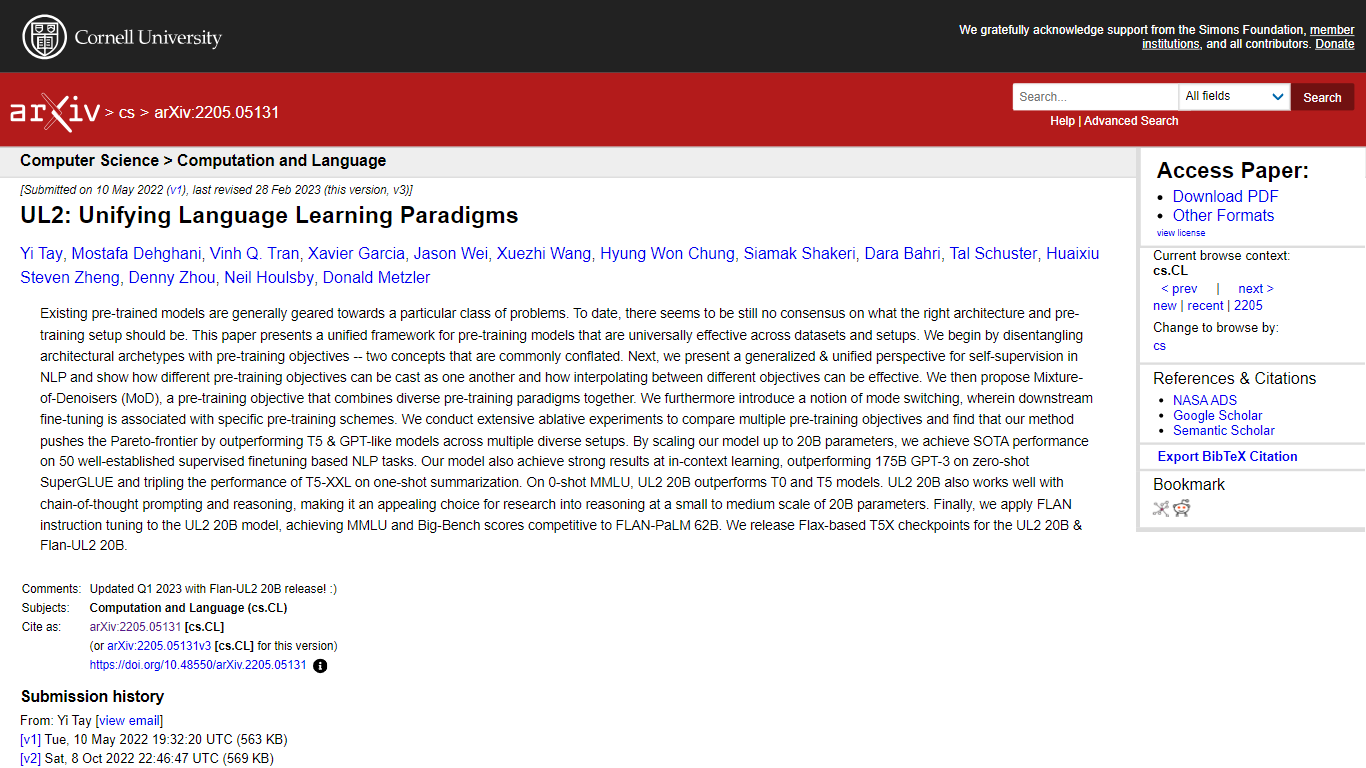UL2 vs GPT-4
When comparing UL2 vs GPT-4, which AI Large Language Model (LLM) tool shines brighter? We look at pricing, alternatives, upvotes, features, reviews, and more.
In a comparison between UL2 and GPT-4, which one comes out on top?
When we put UL2 and GPT-4 side by side, both being AI-powered large language model (llm) tools, The upvote count shows a clear preference for GPT-4. GPT-4 has garnered 7 upvotes, and UL2 has garnered 6 upvotes.
Feeling rebellious? Cast your vote and shake things up!
UL2

What is UL2?
The research paper titled "UL2: Unifying Language Learning Paradigms" focuses on creating a comprehensive framework for pre-training language models that excel across various datasets and setups, confronting the challenge that existing pre-trained models are often specialized for specific types of problems. The authors, Yi Tay, and team, have disentangled architectural archetypes from pre-training objectives to present a broadened self-supervision perspective within NLP. A novel pre-training objective named Mixture-of-Denoisers (MoD) is introduced, blending different pre-training approaches. Additionally, the paper explores mode switching, which ties downstream fine-tuning to definite pre-training methods.
Through rigorous experimentation, the authors demonstrate that their method, especially when scaled up to 20B parameters, gains state-of-the-art (SOTA) accolades on 50 known NLP tasks and showcases impressive in-context learning capabilities, outshining models like GPT-3 and T5 in various benchmarks. The team has publicly released Flax-based T5X checkpoints for their UL2 20B & Flan-UL2 20B models, a significant contribution for NLP research and application.
GPT-4

What is GPT-4?
GPT-4 is the latest milestone in OpenAI’s effort in scaling up deep learning.
GPT-4 is a large multimodal model (accepting image and text inputs, emitting text outputs) that, while less capable than humans in many real-world scenarios, exhibits human-level performance on various professional and academic benchmarks. For example, it passes a simulated bar exam with a score around the top 10% of test takers; in contrast, GPT-3.5’s score was around the bottom 10%. We’ve spent 6 months iteratively aligning GPT-4 using lessons from our adversarial testing program as well as ChatGPT, resulting in our best-ever results (though far from perfect) on factuality, steerability, and refusing to go outside of guardrails.
GPT-4 is more creative and collaborative than ever before. It can generate, edit, and iterate with users on creative and technical writing tasks, such as composing songs, writing screenplays, or learning a user’s writing style.
UL2 Upvotes
GPT-4 Upvotes
UL2 Top Features
Generalized Framework: A unified framework that works universally across various NLP datasets and setups.
Mixture-of-Denoisers: A novel pre-training objective that integrates diverse pre-training methods.
Mode Switching: Connecting fine-tuning processes with specific pre-training approaches.
SOTA Performance: Supersedes established models like T5 and GPT-3 on multiple NLP tasks at different scales.
Public Availability: Releases of Flax-based T5X checkpoints for the UL2 20B and Flan-UL2 20B models.
GPT-4 Top Features
No top features listedUL2 Category
- Large Language Model (LLM)
GPT-4 Category
- Large Language Model (LLM)
UL2 Pricing Type
- Freemium
GPT-4 Pricing Type
- Freemium
